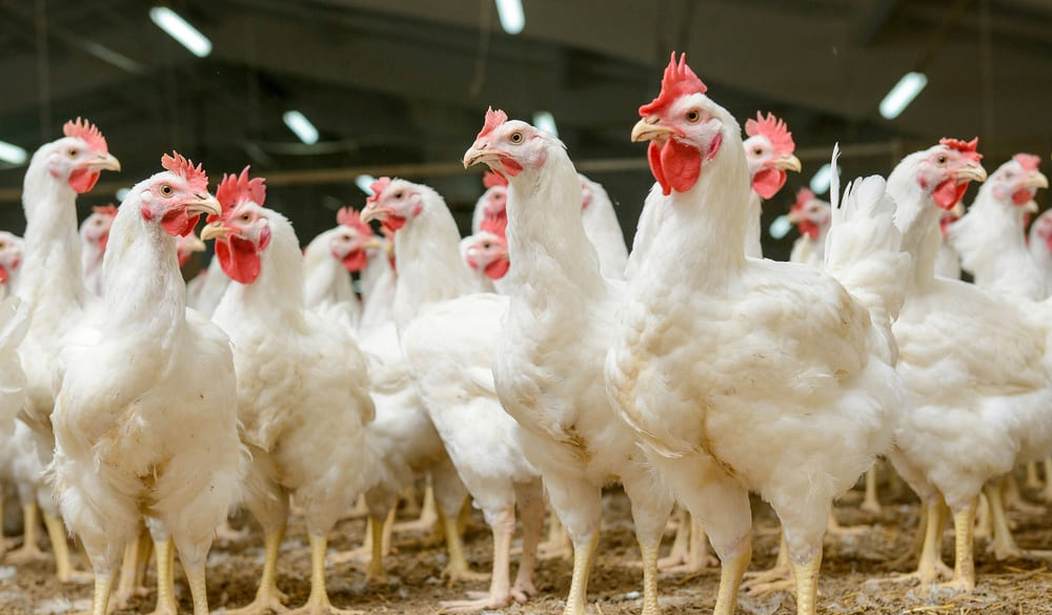A doctor from India has discovered the virus which many medical professionals now believe is responsible for a significant amount of the obesity seen throughout the world. Dr. Nikhil Dhurandhar, who is a nutritional biochemist in addition to being a physician, has been involved with obesity treatment and research for over twenty years. According to his bio at Texas Tech University, Dhurandhar “has treated over 10,000 patients for obesity using lifestyle therapy as well as pharmacological approaches.”
He believes that simple explanations for causes of obesity are inadequate and novel approaches are required for its effective management. He coined the term “Infectobesity” to describe obesity of infectious origin. Dr. Dhurandhar et al were the first to identify adipogenic effects of an avian adenovirus (SMAM-1) and a human adenovirus (Ad36) that cause obesity in animals including rodents and monkeys, and are associated with obesity in humans and non-human primates.
Dhurandhar began his journey of discovery as a young doctor in Mumbai, India, where he had followed in his father’s footsteps in treating obesity but had run into the same obstacle that had frustrated obesity doctors everywhere.
“The problem was that I was not able to produce something for patients that could have meaningful weight loss that was sustainable for a long time,” he says. “Patients kept coming back.”
A profile of Dhurandhar in Wired explains in detail how he discovered what seems to be a missing piece of the puzzle, and how his discovery has revolutionized the treatment of people who suffer from obesity.
Fate intervened in Dhurandhar’s life one day was when he was meeting his father and a family friend, S. M. Ajinkya, a veterinary pathologist, for tea. Ajinkya described an epidemic then blazing through the Indian poultry industry killing thousands of chickens. He had identified the virus and named it using, in part, his own initials—SMAM-1. Upon necropsy, Ajinkya explained, the chickens were found to have shrunken thymuses, enlarged kidneys and livers, and fat deposited in the abdomen. Dhurandhar thought this was unusual because typically viruses cause weight loss, not gain. Ajinkya was about to go on, but Dhurandhar stopped him: “You just said something that doesn’t sound right to me. You said that the chickens had a lot of fat in their abdomen. Is it possible that the virus was making them fat?”
Ajinkya answered honestly, “I don’t know,” and urged Dhurandhar to study the question. That fateful conversation set Dhurandhar on a path to investigate as part of his PhD project whether a virus could cause fat.
Dhurandhar pushed ahead and arranged an experiment using 20 healthy chickens. He infected half of them with SMAM-1 and left the other half uninfected. During the experiment, both groups of chickens consumed the same amount of food. By the end of the experiment, only the chickens infected with the SMAM-1 virus had become fat. However, even though the infected chickens were fatter, they had lower cholesterol and triglyceride levels in their blood than the uninfected birds. “It was quite paradoxical,” Dhurandhar remembers, “because if you have a fatter chicken, you would expect them to have greater cholesterol and circulating triglycerides, but instead those levels went in the wrong direction.”
He set up a repeat experiment with 100 chickens and got the same results — only the chickens with the SMAM-1 virus in their blood became fat.
Next, Dhurandhar arranged three groups of chickens in separate cages:
…one group that was not infected, a second group that was infected with the virus, and a third group that caged infected and uninfected chickens together. Within three weeks, the uninfected chickens that shared a cage with infected ones had caught the virus and gained a significant amount of body fat compared to the isolated uninfected birds.
This led to the startling conclusion that fat could indeed be contagious. So Dhurandhar next wanted to do more tests to see if his obese patients had contracted the virus in the past.
Dhurandhar says, “At that time I had my obesity clinic, and I was doing blood tests for patients for their treatment. I thought I might just as well take a little bit of blood and test for antibodies to SMAM-1. Antibodies would indicate whether the patient was infected in the past with SMAM-1. The conventional wisdom is that an adenovirus for chickens does not infect humans, but I decided to check anyway. It turned out that 20 percent of the people we tested were positive for antibodies for SMAM-1. And those 20 percent were heavier, had greater body mass index and lower cholesterol and lower triglycerides compared to the antibody-negative individuals, just as the chickens had.” Dhurandhar observed that people who had been infected with SMAM-1 were on average 33 pounds heavier than those who weren’t infected.
Dhurandhar continued his research under Dr. Richard Atkinson at the University of Wisconsin, Madison, but ran into a snag when he tried to get samples of the SMAM-1 virus and the U.S. Department of Agriculture refused to grant him an import license.
Through a company that sells viruses for research, the young doctor was able to find Ad-36, an adenovirus with similar qualities to SMAM-1.
Atkinson thought Ad-36 might very well be a mutated form of SMAM-1. When Dhurandhar infected chickens with Ad-36, their fat increased and their cholesterol and triglycerides decreased, just as had happened with SMAM-1. Dhurandhar wanted to make sure he was not getting a false positive, so he injected another group of chickens with a virus called CELO to ensure that other viruses were not also producing fat in chickens. Additionally, he maintained a group of chickens who had not been injected with anything. When he compared the three groups, only the Ad-36 group became fatter. Dhurandhar then tried the experiments in mice and marmosets. In every case, Ad-36 made animals fatter. Marmosets gained about three times as much weight as the uninfected animals, their body fat increasing by almost 60 percent!
Now came the big question: would Ad-36 have any effect on humans? Dhurandhar and Atkinson tested over 500 human subjects to see if they had antibodies to the Ad-36 virus, indicating they had been infected with it at some point in their lives. His team found that 30 percent of subjects who were obese tested positive for Ad-36, but only 11 percent of nonobese individuals did—a 3 to 1 ratio. In addition, nonobese individuals who tested positive for Ad-36 were significantly heavier than those who had never been exposed to the virus. Once again, the virus was correlated with fat.
Next, Dhurandhar devised an even more stringent experiment. He tested pairs of twins for presence of Ad-36. He explains, “It turned out exactly the way we hypothesized—the Ad-36 positive co-twins were significantly fatter compared to their Ad-36 negative counterparts.”
“This is the closest you can come to showing the role of the virus in humans, Dhurandhar says, “short of infecting them,” which of course is unethical.
Regardless, there are naysayers who refuse to believe the research, even after seeing all the convincing data.
Atkinson says, “I remember giving a talk at a conference where I presented 15 different studies in which Ad-36 either caused or was correlated to fatness. At the end of it, a good friend said to me, ‘I just don’t believe it.’ He didn’t give a reason; he just didn’t believe it. People are really stuck on eating and exercise as the only contributors to fatness. But there is more to it.”
Wired chronicled the travails of “Randy,” a 62-year-old man who was scratched by a rooster as a skinny eleven-year-old kid and has been battling obesity ever since. When Randy — whose obesity was becoming life-threatening — tested positive for the Ad-36 virus, he says his whole life changed.
“What Atkinson and Dhurandhar did for me changed my life,” he said. “They made everything make sense. It was very liberating and very empowering.”
Dr. Atkinson has designed a long-term program to treat obesity which he considers a chronic disease. He counsels patients that they will be in treatment “forever” in many cases.
Here is a talk Dr. Dhurandhar gave at the 2014 SEC Symposium, “Prevention of Obesity: Overcoming a 21st Century Public Health Challenge” at Louisiana State University, titled, “Infectobesity: Obesity of Infectious Origin.”









Join the conversation as a VIP Member